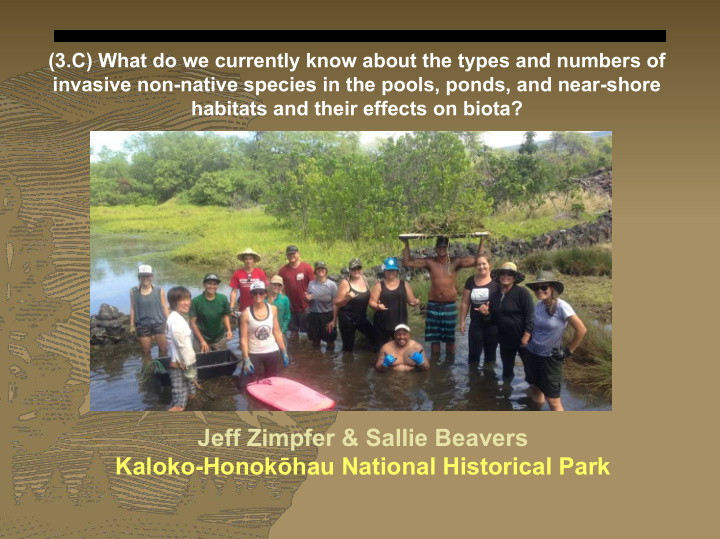



(3.C) What do we currently know about the types and numbers of invasive non-native species in the pools, ponds, and near-shore habitats and their effects on biota? Jeff Zimpfer & Sallie Beavers Kaloko-Honokhau National Historical Park
From: Pacific Birds Joint Habitat Venture 2017: Threat Rankings for Coastal Wetland Habitat
Invasive Fish in West Hawaii Study % of pools # of pools Poecillids Tilapia* with surveyed invasive fish Maciolek & 11% n=264 Brock 1974 Marrack et al. 25% n=398 23.9% (n=95) 3.5% (n=14) 2015 NPS unpub. 18.8% n=191 18.8% (n=36) 1.6% (n=3) (KHNHP) 2018 *Tilapia introduced to Aimakap 2008 (MacKenzie and Bruland 2012) USGS-NPS Research Fish Eradication Methods • Assess efficacy to eradicate tilapia and Poeciliids & determine effects on native species (Nico et al. 2015) • Rotenone • Auhuhu – Tephrosia purpurea • Carbon Dioxide • eDNA – confirm presence/absence E X P E R I E N C E Y O U R A M E R I C A ™
• Kaloko Fishpond ➢ Upside Down Jellyfish Cassiopeia andromeda ➢ Alien Alga – Acanthophora spicifera (Weijerman et al. 2008) • Marine waters ➢ Crown of Thorns Starfish ( native can be invasive) Acanthaster planci -Regular monitoring (Brown et al. 2011, Marrack et al. 2014, Weijerman et al. 2014) ➢ Invasive Snapper, Grouper
Kiawe Forest Removal Mlama ‘Aimakap Fishpond B. maritima & Paspallum removal
Recommend
More recommend